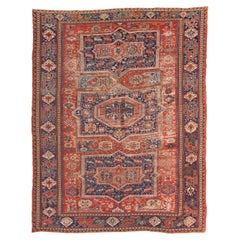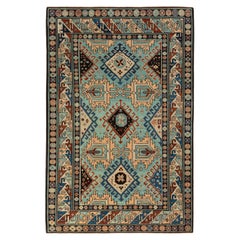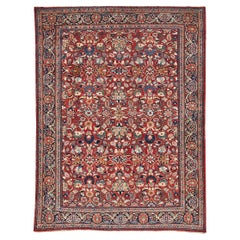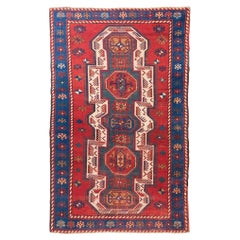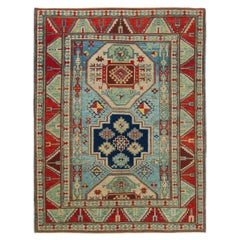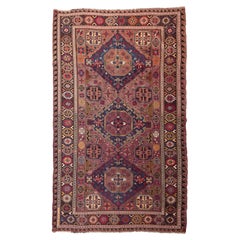Natural Fiber Caucasian Rugs
Late 19th Century Caucasian Kilim Antique Natural Fiber Caucasian Rugs
Wool, Natural Fiber
21st Century and Contemporary Caucasian Revival Natural Fiber Caucasian Rugs
Wool, Natural Fiber, Organic Material
1920s Persian Hollywood Regency Vintage Natural Fiber Caucasian Rugs
Wool, Cotton, Natural Fiber, Organic Material
Late 19th Century Caucasian Oushak Antique Natural Fiber Caucasian Rugs
Wool, Natural Fiber, Organic Material
21st Century and Contemporary Turkish Revival Natural Fiber Caucasian Rugs
Wool, Natural Fiber, Organic Material
Early 20th Century Caucasian Kilim Natural Fiber Caucasian Rugs
Wool, Natural Fiber
21st Century and Contemporary Turkish Revival Natural Fiber Caucasian Rugs
Wool, Natural Fiber, Organic Material
1960s Azerbaijani Kilim Vintage Natural Fiber Caucasian Rugs
Wool, Cotton, Natural Fiber, Organic Material
Late 19th Century Caucasian Oushak Antique Natural Fiber Caucasian Rugs
Wool, Natural Fiber, Organic Material
21st Century and Contemporary Turkish Revival Natural Fiber Caucasian Rugs
Wool, Natural Fiber, Organic Material
21st Century and Contemporary Caucasian Oushak Natural Fiber Caucasian Rugs
Wool, Organic Material, Natural Fiber
21st Century and Contemporary Turkish Revival Natural Fiber Caucasian Rugs
Wool, Natural Fiber, Organic Material
Mid-20th Century Caucasian Kilim Natural Fiber Caucasian Rugs
Wool, Natural Fiber
21st Century and Contemporary Turkish Revival Natural Fiber Caucasian Rugs
Wool, Natural Fiber, Organic Material
Late 19th Century Turkish Oushak Antique Natural Fiber Caucasian Rugs
Wool, Natural Fiber, Organic Material
21st Century and Contemporary Caucasian Revival Natural Fiber Caucasian Rugs
Organic Material, Natural Fiber, Wool
21st Century and Contemporary Caucasian Revival Natural Fiber Caucasian Rugs
Wool, Natural Fiber, Organic Material
Mid-20th Century Caucasian Kilim Natural Fiber Caucasian Rugs
Natural Fiber, Wool
Early 20th Century Caucasian Kilim Natural Fiber Caucasian Rugs
Natural Fiber, Wool
21st Century and Contemporary Turkish Revival Natural Fiber Caucasian Rugs
Wool, Organic Material, Natural Fiber
21st Century and Contemporary Turkish Revival Natural Fiber Caucasian Rugs
Wool, Natural Fiber, Organic Material
21st Century and Contemporary Turkish Revival Natural Fiber Caucasian Rugs
Wool, Natural Fiber, Organic Material
21st Century and Contemporary Turkish Revival Natural Fiber Caucasian Rugs
Wool, Natural Fiber, Organic Material
Mid-19th Century Caucasian Kilim Antique Natural Fiber Caucasian Rugs
Wool, Natural Fiber
Mid-20th Century Caucasian Kilim Natural Fiber Caucasian Rugs
Wool, Natural Fiber
1960s Moldovan Tribal Vintage Natural Fiber Caucasian Rugs
Wool, Cotton, Natural Fiber, Organic Material
21st Century and Contemporary Turkish Revival Natural Fiber Caucasian Rugs
Wool, Natural Fiber, Organic Material
21st Century and Contemporary Turkish Revival Natural Fiber Caucasian Rugs
Wool, Natural Fiber, Organic Material
21st Century and Contemporary Turkish Revival Natural Fiber Caucasian Rugs
Wool, Organic Material, Natural Fiber
21st Century and Contemporary Turkish Revival Natural Fiber Caucasian Rugs
Wool, Natural Fiber, Organic Material
21st Century and Contemporary Turkish Revival Natural Fiber Caucasian Rugs
Wool, Natural Fiber, Organic Material
21st Century and Contemporary Turkish Revival Natural Fiber Caucasian Rugs
Wool, Organic Material, Natural Fiber
Early 20th Century Caucasian Oushak Natural Fiber Caucasian Rugs
Wool, Natural Fiber
21st Century and Contemporary Turkish Revival Natural Fiber Caucasian Rugs
Wool, Natural Fiber, Organic Material
21st Century and Contemporary Turkish Revival Natural Fiber Caucasian Rugs
Wool, Natural Fiber, Organic Material
21st Century and Contemporary Turkish Revival Natural Fiber Caucasian Rugs
Wool, Natural Fiber, Organic Material
21st Century and Contemporary Turkish Revival Natural Fiber Caucasian Rugs
Wool, Natural Fiber, Organic Material
Mid-20th Century Caucasian Kilim Natural Fiber Caucasian Rugs
Natural Fiber, Wool
21st Century and Contemporary Turkish Revival Natural Fiber Caucasian Rugs
Wool, Natural Fiber, Organic Material
21st Century and Contemporary Turkish Revival Natural Fiber Caucasian Rugs
Wool, Natural Fiber, Organic Material
Late 19th Century Caucasian Kazak Antique Natural Fiber Caucasian Rugs
Wool, Natural Fiber, Organic Material
Late 19th Century Azerbaijani Organic Modern Antique Natural Fiber Caucasian Rugs
Wool, Cotton, Natural Fiber, Organic Material
1960s Azerbaijani Mid-Century Modern Vintage Natural Fiber Caucasian Rugs
Wool, Cotton, Natural Fiber, Organic Material
1960s Azerbaijani Kilim Vintage Natural Fiber Caucasian Rugs
Wool, Cotton, Natural Fiber, Organic Material
Early 19th Century Azerbaijani Country Antique Natural Fiber Caucasian Rugs
Wool, Cotton, Natural Fiber, Organic Material
1960s Azerbaijani Tribal Vintage Natural Fiber Caucasian Rugs
Wool, Cotton, Natural Fiber, Organic Material
1990s Caucasian Kazak Natural Fiber Caucasian Rugs
Wool, Cotton, Natural Fiber, Organic Material
1950s Azerbaijani Mid-Century Modern Vintage Natural Fiber Caucasian Rugs
Wool, Cotton, Natural Fiber, Organic Material
2010s Afghan Kazak Natural Fiber Caucasian Rugs
Wool, Cotton, Natural Fiber, Organic Material
1980s Azerbaijani Country Vintage Natural Fiber Caucasian Rugs
Wool, Natural Fiber, Organic Material
Late 19th Century Caucasian Kazak Antique Natural Fiber Caucasian Rugs
Wool, Natural Fiber
1960s Azerbaijani Tribal Vintage Natural Fiber Caucasian Rugs
Wool, Cotton, Natural Fiber, Organic Material
1970s Asian Kilim Vintage Natural Fiber Caucasian Rugs
Wool, Cotton, Natural Fiber, Organic Material
1940s Caucasian Kilim Vintage Natural Fiber Caucasian Rugs
Wool, Cotton, Natural Fiber, Organic Material
1880s Caucasian Hollywood Regency Antique Natural Fiber Caucasian Rugs
Wool, Cotton, Natural Fiber, Organic Material
21st Century and Contemporary Caucasian Revival Natural Fiber Caucasian Rugs
Wool, Natural Fiber, Organic Material
21st Century and Contemporary Turkish Revival Natural Fiber Caucasian Rugs
Wool, Natural Fiber, Organic Material
Mid-20th Century Azerbaijani Mid-Century Modern Natural Fiber Caucasian Rugs
Wool, Cotton, Natural Fiber, Organic Material
21st Century and Contemporary Turkish Revival Natural Fiber Caucasian Rugs
Wool, Natural Fiber, Organic Material
21st Century and Contemporary Turkish Revival Natural Fiber Caucasian Rugs
Wool, Natural Fiber, Organic Material
